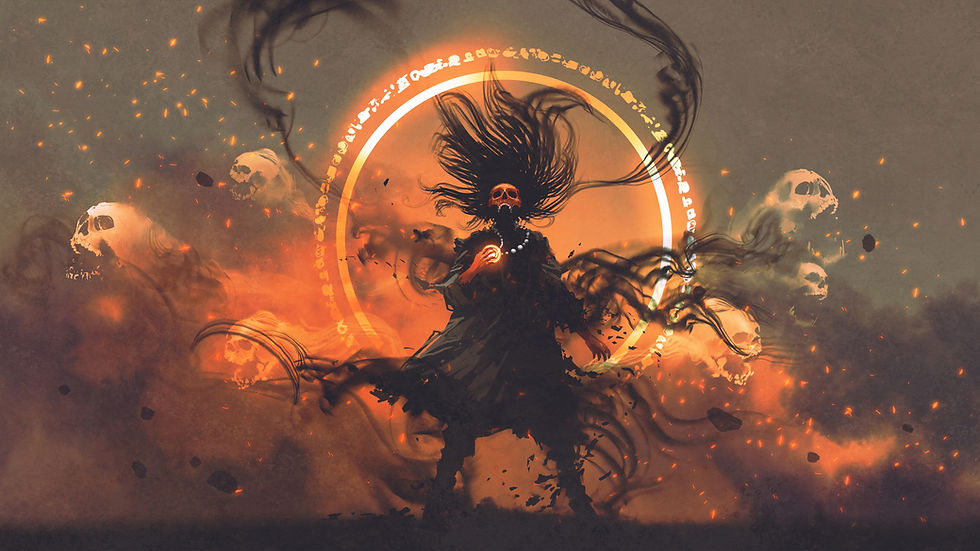Epic of Erra - Plague God of Babylon
- Sylvia Rose

- Jan 11, 2024
- 3 min read
Updated: Jan 18, 2024
Erra (Irra) is an Akkadian plague god dating back to the time of Sargon the Great in the c. 2400 BCE. Erra holds court for centuries.
Read: Cult of the Fire God - Bronze Age Quest Adventure
He spreads terrible diseases and infestations throughout humankind and revels in the suffering of mortals. He even overcomes the Babylonian hero god Marduk.
See also:
The Epic of Erra is a poem by Kabti-ilani-Marduk. He's among the most important writers before Homer.
As the story opens, the god Erra is asleep with his consort Mamītum. His advisor Ishum wakes him up. Ishum is followed by the Seven Sibitti / Sebetti, called the sons of Heaven and Earth.
See also:
Also known as the "champions without peer", each entity has chaos aspects and a destructive destiny assigned by the Creator Sky God Anu. They may be personified weapons or traits.
Read: Cult of the Fire God - Bronze Age Quest Adventure
Erra is enraged at being woken. The Sibitti are hungry for blood. They yell and rampage, calling on Erra to lead the total destruction of humankind. Always the mediator, Ishum tries to pacify Erra, with little effect.
See also:
Erra spits forth toxins, pests and ravaging diseases. Invaders of Babylon are struck by waves of plague. The people cry out in suffering and pain. Weevils and rats decimate grain supplies.
Even Marduk, patron of Babylon, abandons his throne to Erra. In the second and third tablets of the poem, Erra and Išum talk things over, but Erra is just getting started.
See also:
He explodes into battle in Babylon, Sippar, Uruk, Dūr-Kurigalzu and Dēr. Righteous and unrighteous alike fall ill. There are not enough wagons or healthy people to bring the dead to burial.
Read: Cult of the Fire God - Bronze Age Quest Adventure
The cities and homes are infested with vermin, lice and fleas. Pleased with his work, Erra orders Išum to finish the job by defeating the enemies of Babylon.
See also:
Finally, his anger spent, the god returns to his temple Emeslam in Kutha, residence of the Underworld gods. The terrifying Seven accompany him back to Emeslam, and mankind is saved once more.
The poem is well known in Babylonian culture. About three dozen copies of the five tablets are found at Assur, Babylon, Nineveh, Sultantepe and Ur. They may have been used in scribal schools where students copy written works as part of their training.
See also:
According to archaeologists, more copies of the Epic of Erra have been recovered than the famous Mesopotamian Epic of Gilgamesh. Although it seems to point to a crisis or disastrous plague similar to rabbit fever of the 14th century BCE, scholars disagree. The time of its writing, the 8th century, is one of many periods of instability and war in Babylonia.
See also:








